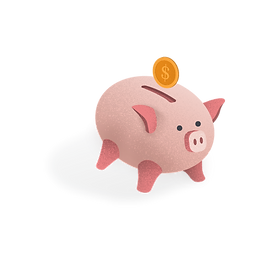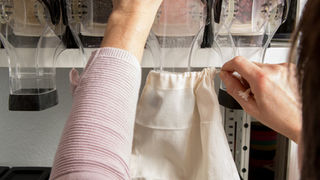Food Systems Thinker
Lesson 4.1 I Am a Consumer and Citizen
At the end of this lesson, you should be able to recognize yourself as part of a more sustainable future. The systems concept you should understand in this lesson is feedback.




Activity 1: Learning about feedback.
Feedback is a process in which the output of a system provides information used to regulate the operation of the system.

Example: Money in your account
If your available cash in the checking account (a stock) goes down, you may decide to work more hours and earn more money. The money entering your bank account is a flow that you can adjust in order to increase your stock of cash to a more desirable level. If your bank account then grows very large, you may feel free to work less (decreasing the inflow). This kind of feedback loop is keeping your level of cash available within a range that is acceptable to you.
Adjusting your earnings is not the only feedback loop that works on your stock of cash. You also may be able to adjust the outflow of money from your account by spending less or more.
FEEDBACK IN THE FOOD SYSTEMS
The following examples show feedback diagrams to present a cause-and-effect structure of a system. The demonstration of circularity introduces the notion of feedback.
1. Being hungry causes you to eat. Eating causes you to being less hungry.

2. When the price of milk is high, farmers may increase milk production, so they can make more money. They make more milk and more money for a while; then the additional supply of milk causes the price to drop and farmers react to that.


3. If the fridge starts to get empty, you go shopping for food. The amount of food in the fridge increases depending on how much food you buy. The more food in the fridge, the more cooking you can do. When you cook more, the fridge starts to get empty again.

POSITIVE AND NEGATIVE FEEDBACK LOOPS

The concept of feedback can be applied in various stages of the food systems. For example, in terms of economic aspect, consumer demand for chemical-free food increase the supply of chemical-free food from the farmers. In environmental aspect, adding compost or manure lower the external resources and increase the production. In social aspect, donating food helps reduce food waste and decrease energy consumption in food processing.



Download and complete the worksheet.
"Every time you make a food decision,
you're having an impact on the food system"
Gabrielle Blavatsky



Activity 2: Learn from the food-choice guideline about ways you could support a sustainable food system as a consumer.
The best thing you can do as an eco-conscious consumer is learn how your food is grown and demand responsible, sustainable practices at every opportunity.
If you’re considering all these factors, pushing for more sustainable-food solutions in your community, and you still crave a delicious, sustainably grown banana shipped in from the tropics? Don’t feel guilty. Just eat it!!!
Everyone thinks of changing the world,
but no one thinks of changing themselves.
- Leo Tolstoy



Activity 3: Learn from nine images about ways you could support a sustainable food system as a citizen.
Ways to Support a Sustainable Food System




Additional Resource: Ideas for a more sustainable food system around the world.



Additional Resource: Factors influencing food choices.
As a consumer, you make choices of what you eat and buy all the time. The diagram below presents factors that influence those choices.
CONCLUSION
You learned how to use feedback loop diagrams to explain the cause-and-effect relationships. This helps explain a behavior of a complex system.
This lesson offered various examples of how you, as a consumer and citizen, can support a sustainable food system. For example, growing your food, choosing local whole foods, reducing waste, joining food movements, and advocating for sustainable practices.
Experiential Learning
Instruction: Visit a farmers' market near you and ask a farmer about the food they grow. Including:
• Where is your farm?
• How do you make a decision of what to grow?
• What is the most popular item?
• Click here for more questions
Take a selfie with the farmer and share on instagram.
References
Koch, P. A., Calabrese Barton, A., & Contento, I. R. (2008). Farm to table and beyond. New York, NY: Teacher College Columbia
University.
Roberts, N. (1978). Teaching dynamic feedback systems thinking: An elementary view. Management Science, 24(8), 836-843.
https://feedbackglobal.org/building-better-food-system
https://foodtank.com/news/2014/07/is-food-growing-a-revolutionary-act
https://www.nrdc.org/stories/attention-food-lovers-eco-conscious-eating-isnt-all-about-distance













